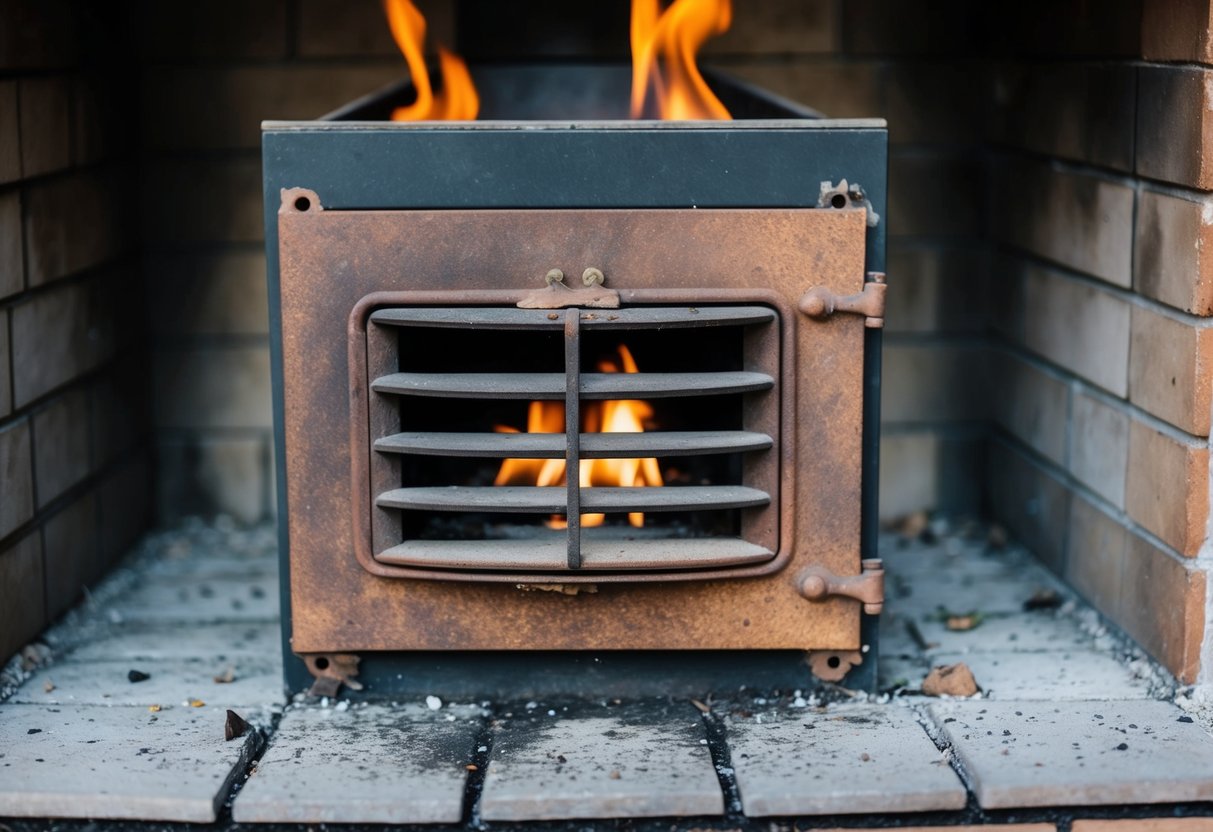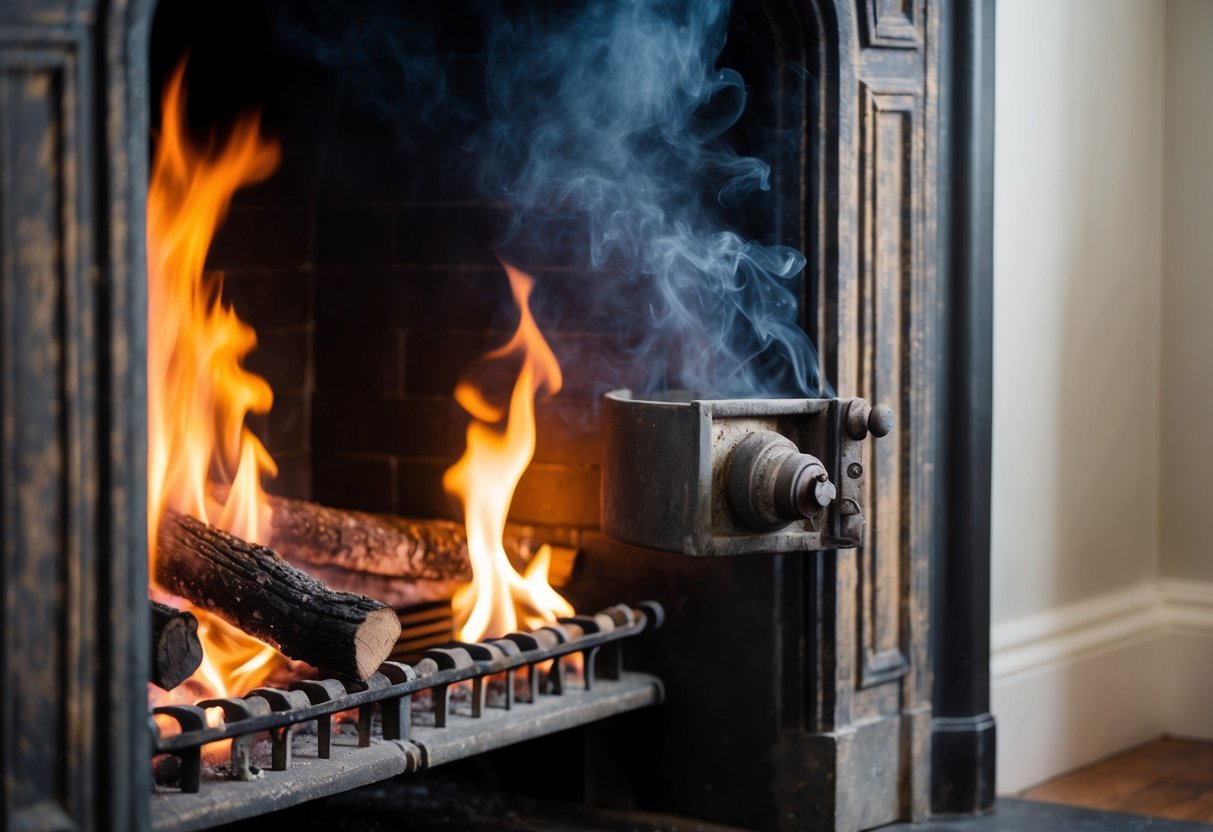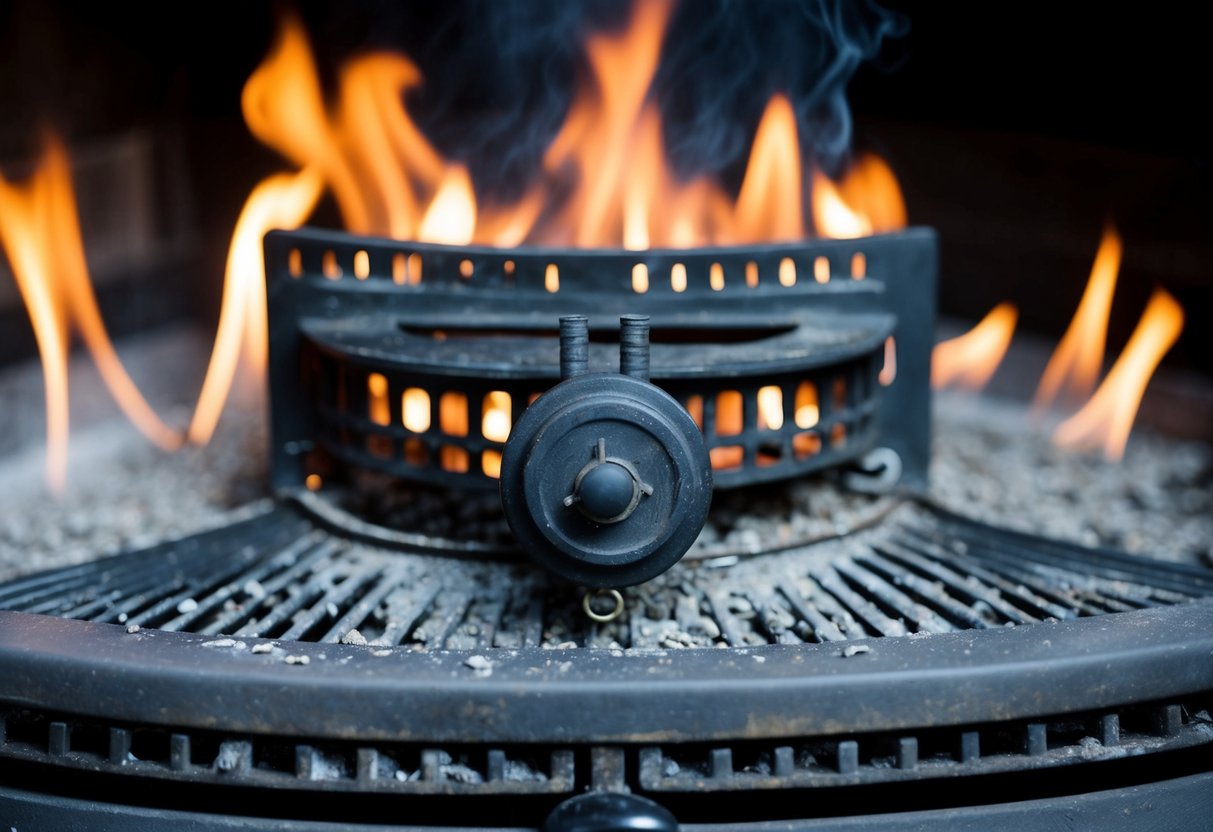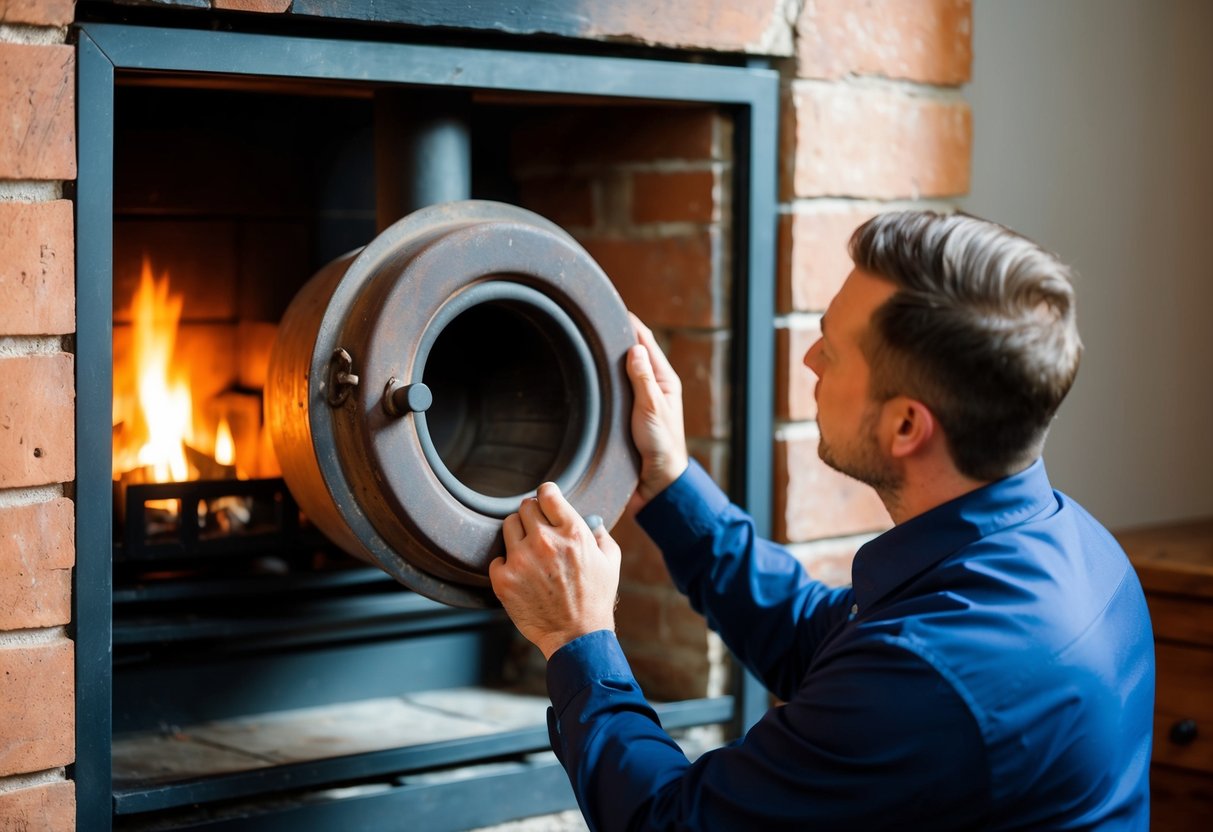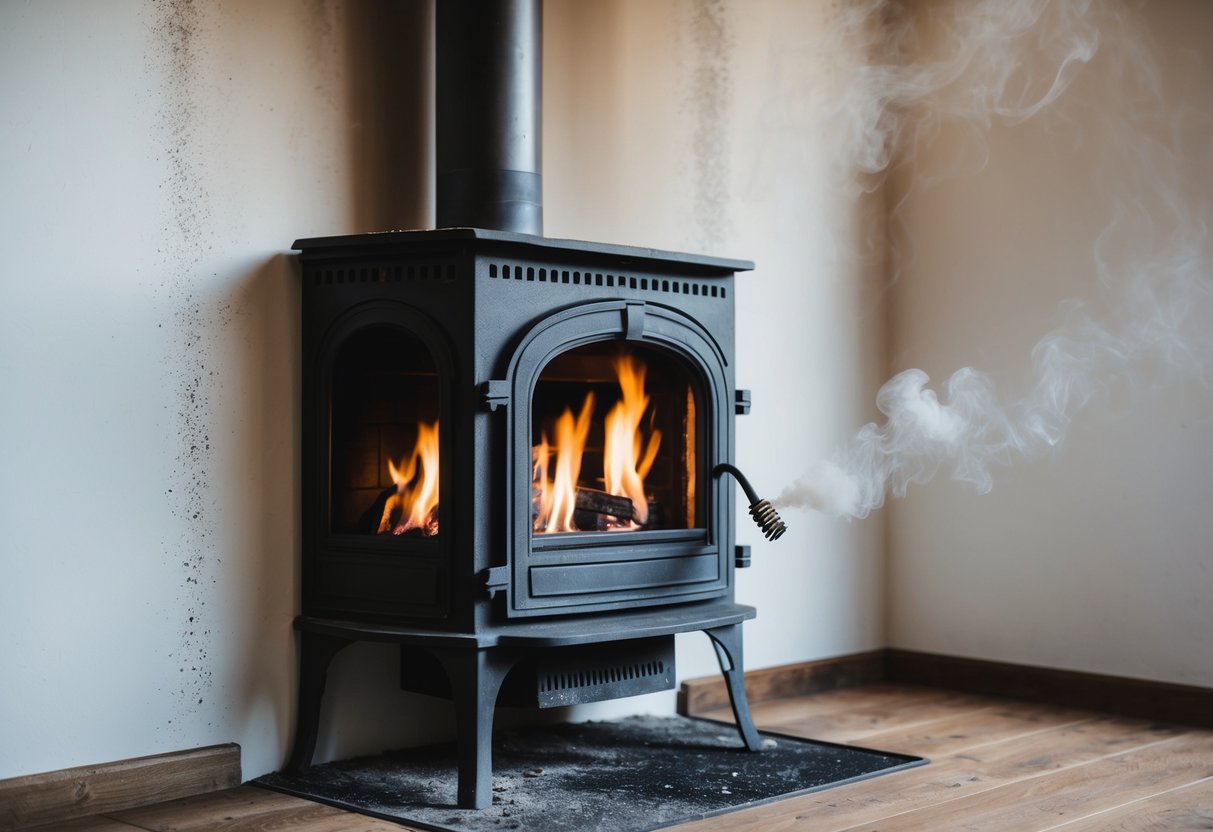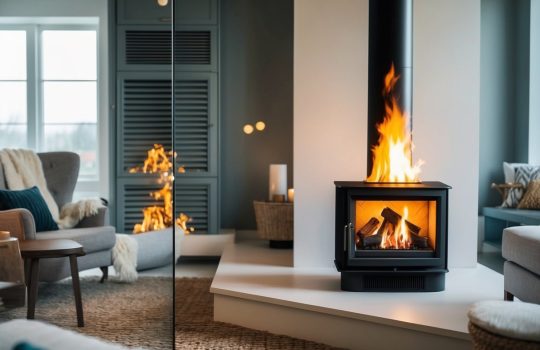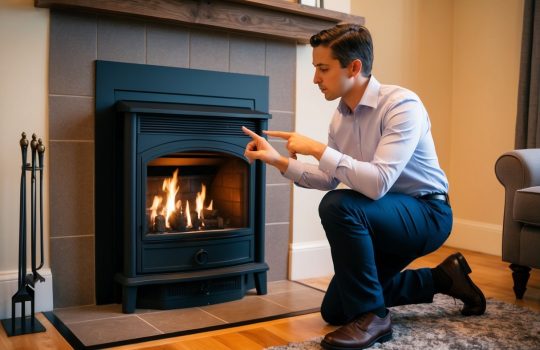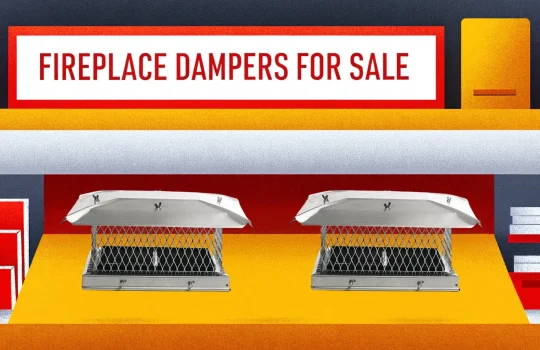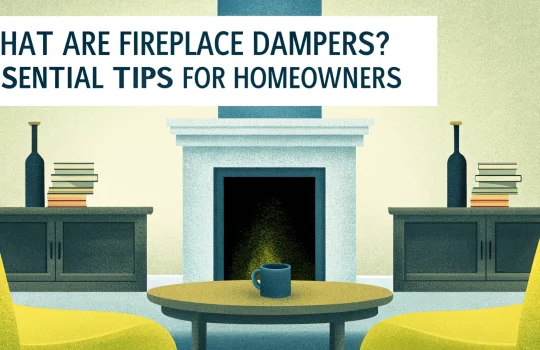Top 5 Signs Your Fireplace Damper Needs Replacement: Critical Warning Signals for Homeowners
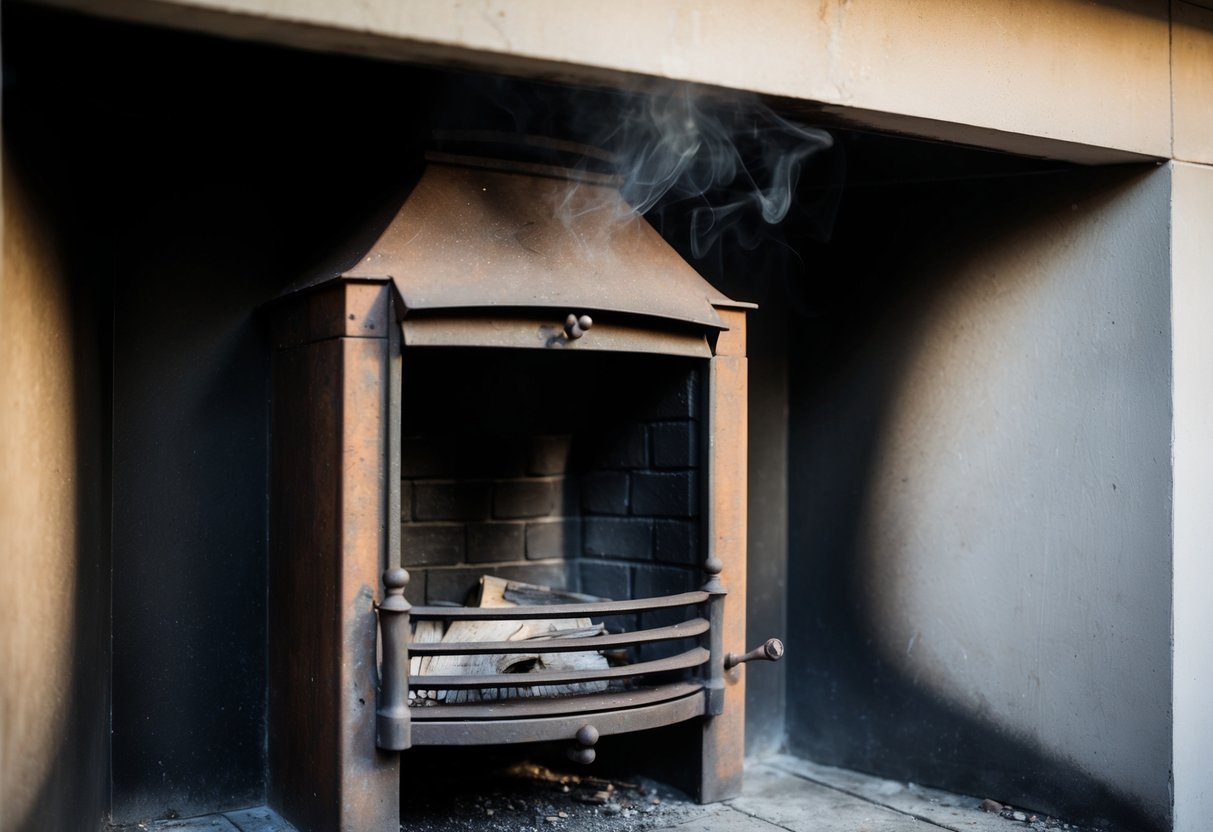
A well-functioning fireplace damper is crucial for your home’s safety and energy efficiency. As homeowners, we often overlook this essential component until problems arise. The top 5 signs that indicate your fireplace damper needs replacement are difficulty opening or closing, visible rust or corrosion, drafts when the damper is closed, increased energy bills, and smoke entering your living space.
Fireplace dampers play a vital role in regulating airflow and preventing heat loss. They also keep out pests and moisture when the fireplace is not in use. Recognizing the signs of a failing damper early can save you from costly repairs and potential safety hazards down the line.
Regular maintenance and inspection of your fireplace and chimney system can help catch damper issues before they become serious problems. If you notice any of these warning signs, it’s time to consider a professional assessment and potentially replace your fireplace damper.
Key Takeaways
- Difficulty operating the damper or visible damage are clear indicators of replacement needs.
- A faulty damper can lead to increased energy costs and compromise your home’s safety.
- Regular inspections and prompt replacement of damaged dampers ensure optimal fireplace performance.
Identifying Damper Damage
Spotting a damaged fireplace damper early can save homeowners from costly repairs and energy loss. We’ll explore key visual signs of damage and common operational issues to watch for.
Visual Inspection for Damage
We recommend starting with a close visual examination of the damper plate and surrounding area. Look for any visible cracks, warping, or rust on the damper plate itself. These defects can prevent proper sealing and compromise its function. Check for debris buildup or soot accumulation that could hinder movement.
Inspect the damper frame for signs of corrosion or deterioration. Pay attention to any gaps between the damper and chimney walls when closed. These gaps indicate a poor seal, allowing heat to escape and cold air to enter.
Examine the damper’s hinges and pivot points for wear or damage. Loose or broken components can affect the damper’s ability to open and close smoothly.
Problems with Opening and Closing
A properly functioning damper should open and close easily with minimal effort. If you encounter resistance when operating the damper, it may signal a problem. Try opening and closing the damper several times to assess its performance.
Listen for any unusual sounds like scraping or grinding during operation. These noises often indicate misalignment or damage to the damper mechanism. If the damper won’t open or close completely, it may be stuck due to debris or mechanical failure.
Check the damper chain or handle for any signs of damage or disconnection. A broken control mechanism can render the damper inoperable. Ensure the damper maintains its position when open or closed without slipping.
Understanding the Role of a Damper
A fireplace damper is a crucial component that regulates airflow and impacts energy efficiency. It acts as a barrier between your home’s interior and the outdoor elements.
Controlling Airflow in Your Chimney
Dampers serve as gatekeepers for your chimney system. When open, they allow smoke and combustion gases to escape safely. We can adjust dampers to fine-tune airflow, optimizing fire performance and heat output.
During use, an open damper ensures proper ventilation. This prevents smoke from backing up into your living space. When the fireplace is idle, a closed damper blocks cold air from entering and warm air from escaping.
Dampers also help prevent rain, snow, and debris from entering your chimney. This protection is essential for maintaining a clean and efficient fireplace system.
Energy Efficiency and Preventing Heat Loss
A properly functioning damper is key to your home’s energy efficiency. When closed, it creates a seal that prevents heated air from escaping up the chimney. This can lead to significant energy savings, especially during colder months.
In summer, a closed damper keeps cool air-conditioned air inside your home. It also blocks hot outdoor air from entering, reducing the strain on your cooling system.
We recommend checking your damper’s seal regularly. A tight seal ensures maximum energy retention. If you notice drafts or temperature fluctuations near your fireplace, it may indicate a damper issue.
Signs of Damper Failure and Creosote Accumulation
Recognizing the signs of damper failure and creosote buildup is crucial for maintaining a safe and efficient fireplace. These issues can lead to serious problems if left unaddressed.
Excessive Creosote Buildup
Creosote accumulation is a common issue in fireplaces. We often see it as a black, tar-like substance coating the chimney walls. This buildup can restrict airflow and increase the risk of chimney fires.
Regular inspections are key to identifying creosote problems early. If you notice a strong, acrid smell coming from your fireplace, it may indicate excessive creosote.
In severe cases, creosote can form a thick, glazed layer that’s difficult to remove. This can significantly impair damper function and pose a serious fire hazard.
Trouble with Smoke and Drafts
A malfunctioning damper often leads to smoke and draft issues. We might notice smoke entering the room when the fireplace is in use. This can be due to a damper that won’t open fully or seal properly when closed.
Cold drafts coming down the chimney are another sign of damper problems. A properly functioning damper should prevent downdrafts when closed.
If you’re having trouble controlling the fire or maintaining proper airflow, it could indicate a stuck or damaged damper. Addressing these issues promptly can improve fireplace efficiency and safety.
Professional Inspection and Fireplace Service
Regular inspections and maintenance are crucial for keeping your fireplace and damper in optimal condition. Professional services can identify and address issues before they become major problems.
Scheduling Regular Inspections
We recommend scheduling annual fireplace inspections with a certified chimney specialist. These professionals have the expertise to thoroughly examine your fireplace system, including the damper, flue, and chimney. They can spot signs of wear, damage, or potential safety hazards that may not be visible to the untrained eye.
During an inspection, the technician will:
- Check the damper’s operation and seal
- Examine the flue for creosote buildup
- Assess the chimney’s structural integrity
- Test for proper ventilation
Regular inspections help prevent costly repairs and ensure your fireplace remains safe to use.
When to Seek a Chimney Sweep
Chimney sweeps play a vital role in fireplace maintenance. We advise scheduling a chimney sweep at least once a year, ideally before the start of the burning season.
Signs that indicate you need a chimney sweep include:
- Visible soot or creosote buildup
- Unpleasant odors coming from the fireplace
- Smoke entering your home when the fireplace is in use
- Animals or debris in the chimney
A professional chimney sweep will clean the flue, remove creosote deposits, and clear any obstructions. This service improves your fireplace’s efficiency and reduces the risk of chimney fires.
Choosing the Right Replacement Damper
Selecting an appropriate replacement damper is crucial for optimal fireplace performance and energy efficiency. We’ll explore key factors to consider when choosing between throat and top-sealing dampers, as well as important installation considerations.
Throat Dampers vs. Top-Sealing Dampers
Throat dampers are the traditional choice, located just above the firebox. They use a metal plate to seal the chimney when closed. Top-sealing dampers, on the other hand, are installed at the top of the chimney. They provide a tighter seal and better energy efficiency.
Top-sealing dampers offer superior protection against drafts, debris, and animals. They’re especially effective in older homes with poorly insulated chimneys. Throat dampers are simpler to operate and may be preferred in newer fireplaces with well-designed flues.
When replacing a damper, consider your home’s age, climate, and fireplace usage. Top-sealing dampers often provide better long-term value despite higher upfront costs.
Professional Installation Considerations
Professional installation is critical for proper damper function and safety. A certified chimney sweep or fireplace technician should assess your chimney’s condition before installation.
For throat damper replacements, the technician will need to remove the old damper and ensure the new one fits properly in the existing opening. This may require some masonry work.
Top-sealing damper installations involve mounting the unit at the chimney top. The technician must ensure a proper seal and connect the control cable correctly.
We recommend choosing high-quality materials like cast iron or stainless steel for better durability. Proper installation and regular maintenance will extend the life of your new damper and improve your fireplace’s efficiency.
Frequently Asked Questions
Fireplace dampers can develop issues over time that affect their functionality and efficiency. Recognizing the signs of a faulty damper is crucial for maintaining a safe and effective fireplace system.
What are the indications that a chimney damper needs replacing?
Signs of a damper needing replacement include difficulty opening or closing, visible rust or corrosion, and drafts coming from the fireplace when the damper is closed. Strange noises when operating the damper or a persistent smoky smell in the room can also indicate problems.
What symptoms suggest a malfunctioning fireplace damper?
A malfunctioning damper may allow cold air to enter the home or hot air to escape when the fireplace isn’t in use. Smoke entering the room during fires, increased heating bills, and excessive creosote buildup are other symptoms to watch for.
How can I identify issues with my fireplace damper?
We can identify damper issues by visually inspecting for damage, testing its operation, and feeling for drafts. Using a flashlight to examine the damper plate and mechanism can reveal wear or misalignment. Checking for proper sealing when closed is also important.
What is the average cost to replace a chimney damper?
The cost to replace a chimney damper typically ranges from $50 to $300, depending on the type and quality. Simple damper plates are on the lower end, while top-mounted dampers with additional features can be more expensive. Labor costs are often additional.
How should a fireplace damper be inspected for proper function?
To inspect a damper, we should open and close it several times to ensure smooth operation. Checking for a tight seal when closed and proper positioning when open is crucial. Examining the surrounding brickwork for damage and the damper plate for warping or rust is also important.
What are common problems that necessitate fireplace damper replacement?
Common problems requiring damper replacement include warping from heat exposure, rust due to moisture, broken or missing parts, and misalignment. Dampers that no longer create an airtight seal or those damaged beyond repair often need replacement to maintain fireplace efficiency and safety.

